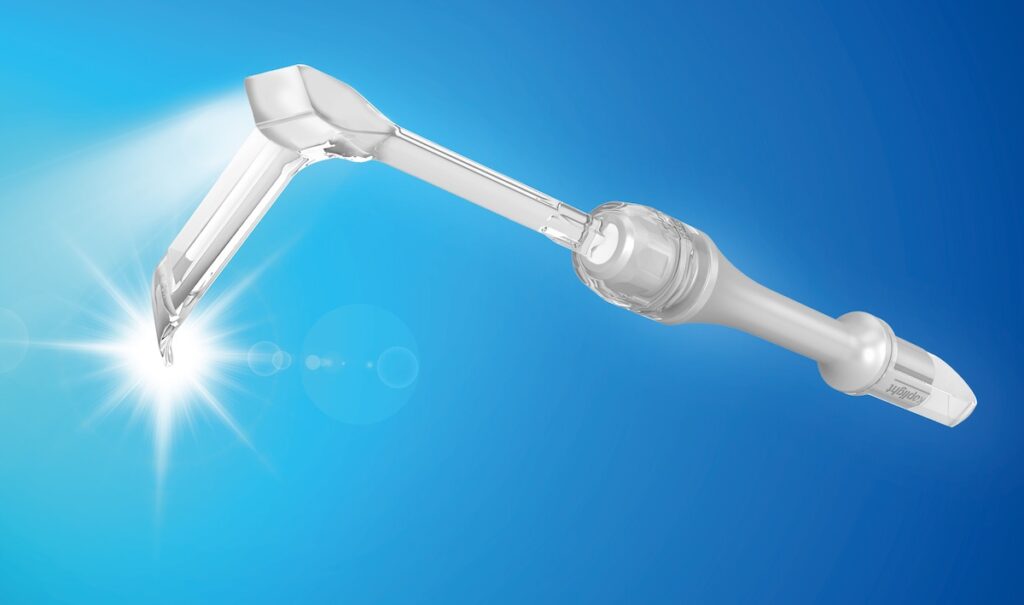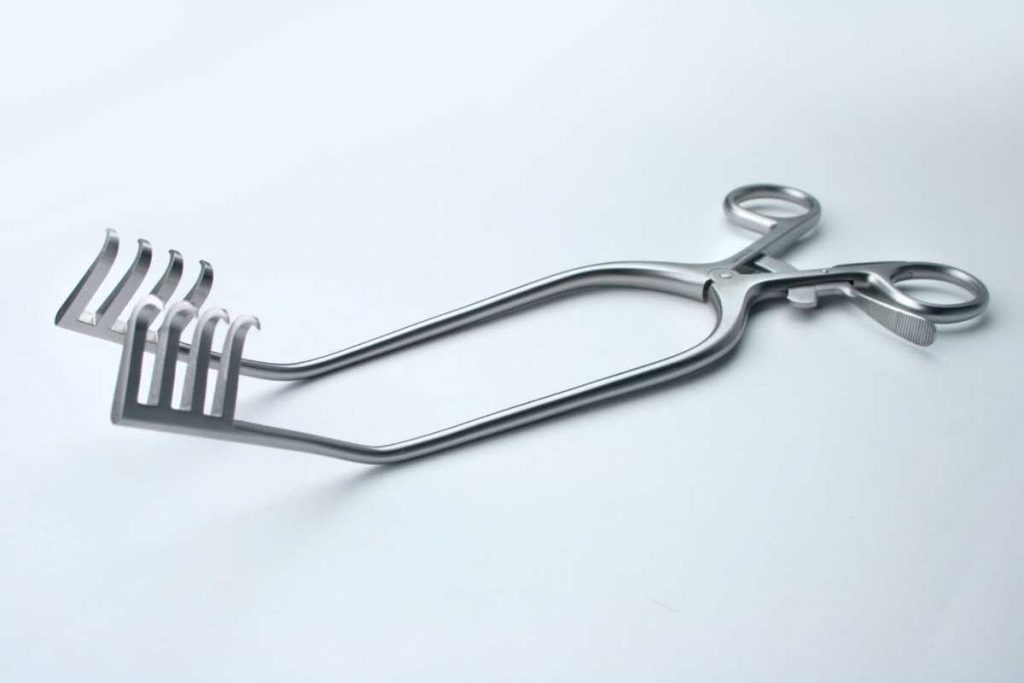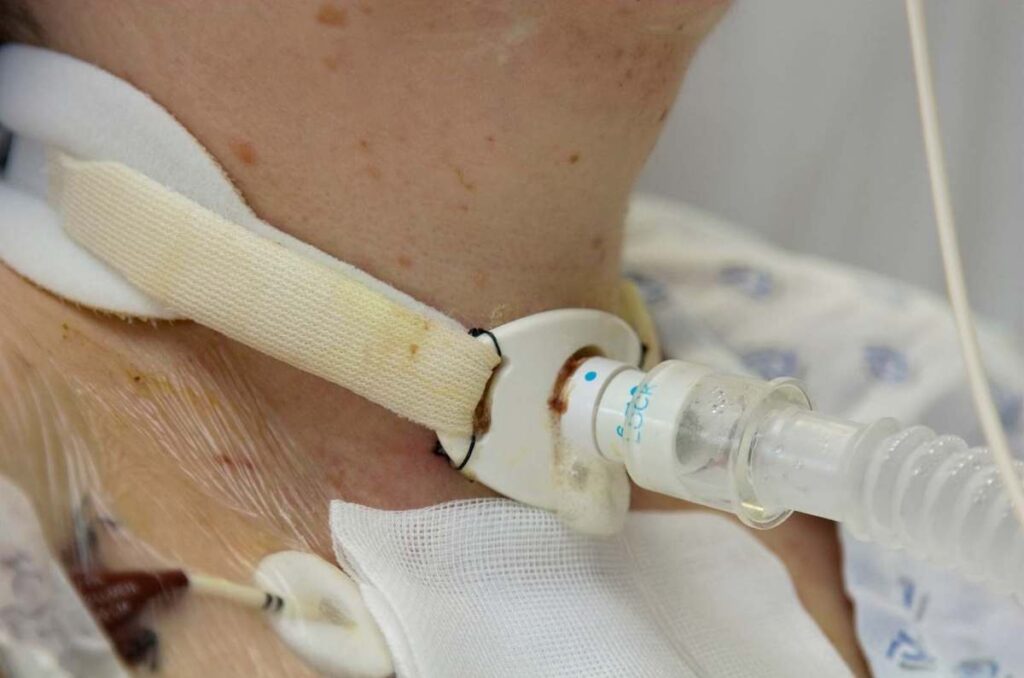Tracheotomy is a surgical procedure in which an incision is made into the anterior portion of the neck. Multiple surgical retractors are needed for this sometimes-urgent surgery. The purpose of a tracheotomy is to gain access to the trachea to insert a tube to aid breathing.
Tracheotomies may be conducted for conditions such as infection, tumors, or vocal cord paralysis. They are also performed when there’s an urgent need to open the airway, such as in traumatic accidents.
Retractors’ role in tracheotomy
After the first incision is made, the skin and subcutaneous tissue are held apart by a handheld self-retaining retractor.
Next is the dissection of the strap muscles, which are then held apart by, for example, Langenbeck retractors to allow adequate visualization. The last layer to be kept away from the surgical field is the deeper investing fascia. Here, a Volkmann retractor is used to pull away from the investing fascia for adequate visualization.
Langenbeck retractor
The Langenbeck retractor has a single blunt blade on an L-shaped working end. This can be used for reaching hidden cavities, and it has a unique way of retracting structures without causing much damage, using an approach known as atraumatic retraction. Atraumatic retraction is accomplished by having a slight angle at the working end of the L-shape to avoid injury to nearby structures and organs.
Langenbeck retractors are commonly used in abdominal surgeries to retract and expose abdominal organs, but a smaller-blade Langenbeck can be used for tracheotomy. Unfortunately, because the Langenbeck retractor has a blunt end, it can’t secure rigid structures such as fascia. Another limitation of this retractor is that it’s prone to operator fatigue, which hinders the ability to properly visualize bodily structures. This is because it needs to be constantly held at a specific angle to be effective.
An improvement to the Langenbeck retractor is the Yasui koplight retractor. This cordless surgical retractor directs self-contained light under and into the surgical area, The effect enhanced the visual field without having to constantly adjust overhead surgical lights. It also helps preserve a sterile environment.

The koplight has a plastic build, with durable blades of varying sizes. The body is reusable. The blades can be switched out depending on the surgeon’s needs. This medical advance was enabled through a doctor’s realization of the need for it, durable materials with modern technology, and reliable made-in-Japan quality. Hard metal is no longer the only way to go for retractors.
Weitlaner retractor
In tracheotomy, the most common self-retaining retractor is the Weitlander retractor. This retractor has a pair of arms with ends shaped like a rake.
The rake-like ends point in opposite directions and can be either blunt or sharp, depending on the use. The ends are also angled downward to reduce hand fatigue and to allow for optimal visualization of tissues after application.
Weitlaner retractors have a self-retaining mechanism and are usually used to retract skin and subcutaneous tissues in minor surgeries. The small size means the Weitlaner retractor can only be used in surgeries using an incision of up to about 5–10 cm, depending on the retractor size. This makes it impractical for, for example, larger-scale abdominal surgeries.

Its primary advantage is the self-retaining mechanism helpful in surgeries requiring constant retraction but without much space for maneuverability. This is especially true in neck surgeries, including tracheotomy, thyroidectomy, and ligation of thyroglossal duct cysts. A significant disadvantage of this retractor is the lack of maneuverability. Once the self-retaining mechanism is in place, the retractor can’t be moved around freely to accommodate the surgeon’s field of view. And like all metal retractors, it may also show up on imaging.
Volkmann retractor
The Volkmann retractor has a working end shaped like a rake. This working end has many sharp hooks at the end, designed to grasp tough structures such as the scalp and fascia.
The design of the Volkmann is especially helpful in bone and joint surgeries, as it can provide adequate visualization.
The downside to these forceps is the nature of the hooks. The hooks are not designed for atraumatic retraction and shouldn’t be used in surgeries near brittle structures, such as the liver, spleen, and kidney.
This retractor is also prone to operator fatigue, especially in long surgeries because it’s designed to lift structures away from the surgical plane, which requires consistent tension.
—
For head and neck surgeries like tracheotomy, the koplight™ surgical light retractor is small enough to handle smaller regions, lightweight to reduce fatigue, and provides valuable light. Contact us for more information or if you’re interesting in purchasing or becoming a distributor.

